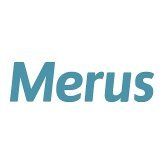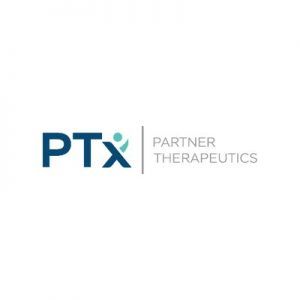LEXINGTON, Mass., Dec. 6, 2025 /PRNewswire/ -- Partner Therapeutics, Inc. (PTx), a private, fully-integrated biotechnology company, announced new data from a post hoc analysis of the Phase 2 eNRGy trial (NCT02912949) evaluating zenocutuzumab in patients with treatment-naïve non-small cell lung cancer (NSCLC) harboring a neuregulin 1 (NRG1) gene fusion. Results were presented in a late-breaking oral session at the IASLC-ASCO North America Conference on Lung Cancer (NACLC), in Chicago, Illinois.
The new analysis evaluated the efficacy and safety of zenocutuzumab-zbco in treatment-naïve and previously treated NRG1+ NSCLC. Among 20 treatment-naïve and 121 previously treated patients, zenocutuzumab demonstrated an overall response rate (ORR) of 35% and 31%, respectively. The clinical benefit rate, defined as partial/complete response or stable disease for ≥24 weeks, was 65% in treatment-naïve and 58% in previously treated patients. Median duration of response was 17.1 months in treatment naïve patients, notably longer than in previously treated patients, 7.4 months. All treatment-related adverse events were grade 1 or 2. Zenocutuzumab safety profile was favorable and consistent with prior data.
"These data underscore the potential of zenocutuzumab as a first-line option for patients with NRG1-positive NSCLC, a patient population that typically responds poorly to standard first-line therapy," said Stephen Liu, MD, of Georgetown University. "Early and durable responses, coupled with a favorable safety profile are encouraging and highlight the importance of targeted therapy in this rare molecular subset."
"Consistent with other therapies targeting key oncogenic drivers, early intervention can lead to better outcomes — and we see the same with zenocutuzumab," said Pritesh J. Gandhi, Chief Development Officer at Partner Therapeutics. "These findings strengthen our conviction that early targeted inhibition of the NRG1 pathway with zenocutuzumab has the potential to meaningfully improve outcomes for patients with NRG1+ NSCLC."
"For patients and families facing NRG1+ lung cancer, these results mark meaningful progress," said Danielle Hicks, Chief Patient Officer of GO2 for Lung Cancer. "The durable responses and manageable safety profile of zenocutuzumab offer renewed hope and reinforce the need for continued innovation in biomarker-driven lung cancer care."
The abstract will be available on the Partner Therapeutics website under the research tab following the conference. Additional meeting information can be found on the IASLC-ASCO NACLC website.
In December 2024, zenocutuzumab-zbco (BIZENGRI®) received U.S. Food and Drug Administration accelerated approval for the treatment of adults with advanced unresectable or metastatic non-small cell lung cancer (NSCLC) and pancreatic adenocarcinoma harboring a neuregulin 1 (NRG1) gene fusion with disease progression on or after prior systemic therapy. The indications were approved under accelerated approval based on ORR and duration of response. Continued approval for these indications may be contingent upon verification and description of clinical benefit in a confirmatory trial(s).
For more information on the eNRGy trial and zenocutuzumab-zbco, please visit .
About NRG1 Gene Fusions
NRG1 fusions are unique cancer drivers that create oncogenic chimeric ligands rather than the more widely described chimeric receptors (NTRK, RET, ROS1, ALK, and FGFR fusions). The chimeric ligands bind to HER3, triggering HER2/HER3 heterodimerization and activate downstream signaling pathways that cause cancer cells to grow and proliferate. Zenocutuzumab-zbco is a bispecific antibody that blocks HER2/HER3 dimerization and NRG1 fusion interactions with HER3, resulting in the suppression of these pathways. Comprehensive molecular testing, notably tissue-based RNA next generation sequencing, is essential to identify rare and actionable gene fusions like NRG1.
About BIZENGRI (zenocutuzumab-zbco)
INDICATIONS
BIZENGRI is indicated for the treatment of adults with advanced unresectable or metastatic non-small cell lung cancer (NSCLC) harboring a neuregulin 1 (NRG1) gene fusion with disease progression on or after prior systemic therapy.
BIZENGRI is indicated for the treatment of adults with advanced unresectable or metastatic pancreatic adenocarcinoma harboring a neuregulin 1 (NRG1) gene fusion with disease progression on or after prior systemic therapy.
These indications are approved under accelerated approval based on overall response rate and duration of response. Continued approval for these indications may be contingent upon verification and description of clinical benefit in a confirmatory trial(s).
Important Safety Information
BOXED WARNING: EMBRYO-FETAL TOXICITY
Embryo-Fetal Toxicity: Exposure to BIZENGRI during pregnancy can cause embryo-fetal harm. Advise patients of this risk and the need for effective contraception.
WARNINGS AND PRECUATIONS
Infusion-Related Reactions/Hypersensitivity/Anaphylactic Reactions
BIZENGRI can cause serious and life-threatening infusion-related reactions (IRRs), hypersensitivity and anaphylactic reactions. Signs and symptoms of IRR may include chills, nausea, fever, and cough.
In the eNRGy study, 13% of patients experienced IRRs, all were Grade 1 or 2; 91% occurred during the first infusion.
Administer BIZENGRI in a setting with emergency resuscitation equipment and staff who are trained to monitor for IRRs and to administer emergency medications. Monitor patients closely for signs and symptoms of infusion reactions during infusion and for at least 1 hour following completion of first BIZENGRI infusion and as clinically indicated. Interrupt BIZENGRI infusion in patients with ≤ Grade 3 IRRs and administer symptomatic treatment as needed. Resume infusion at a reduced rate after resolution of symptoms. Immediately stop the infusion and permanently discontinue BIZENGRI for Grade 4 or life-threatening IRR or hypersensitivity/anaphylaxis reactions.
Interstitial Lung Disease/Pneumonitis
BIZENGRI can cause serious and life-threatening interstitial lung disease (ILD)/pneumonitis.
In the eNRGy study, ILD/pneumonitis occurred in 2 (1.1%) patients treated with BIZENGRI. Grade 2 ILD/pneumonitis (Grade 2) resulting in permanent discontinuation of BIZENGRI occurred in 1 (0.6%) patient. Monitor for new or worsening pulmonary symptoms indicative of ILD/pneumonitis (e.g., dyspnea, cough, fever). Immediately withhold BIZENGRI in patients with suspected ILD/pneumonitis and administer corticosteroids as clinically indicated.
Permanently discontinue BIZENGRI if ILD/pneumonitis ≥ Grade 2 is confirmed.
Left Ventricular Dysfunction
BIZENGRI can cause left ventricular dysfunction.
Left ventricular ejection fraction (LVEF) decrease has been observed with anti-HER2 therapies, including BIZENGRI. Treatment with BIZENGRI has not been studied in patients with a history of clinically significant cardiac disease or LVEF less than 50% prior to initiation of treatment.
In the eNRGy study, Grade 2 LVEF decrease (40%-50%; 10 – 19% drop from baseline) occurred in 2% of evaluable patients. Cardiac failure without LVEF decrease occurred in 1.7% of patients, including 1 (0.6%) fatal event.
Before initiating BIZENGRI, evaluate LVEF and monitor at regular intervals during treatment as clinically indicated. For LVEF of less than 45% or less than 50% with absolute decrease from baseline of 10% or greater which is confirmed, or in patients with symptomatic congestive heart failure (CHF), permanently discontinue BIZENGRI.
Embryo-Fetal Toxicity
Based on its mechanism of action, BIZENGRI can cause fetal harm when administered to a pregnant woman. No animal reproduction studies were conducted with BIZENGRI. In post marketing reports, use of a HER2-directed antibody during pregnancy resulted in cases of oligohydramnios manifesting as fatal pulmonary hypoplasia, skeletal abnormalities, and neonatal death. In animal models, studies have demonstrated that inhibition of HER2 and/or HER3 results in impaired embryo-fetal development, including effects on cardiac, vascular and neuronal development, and embryolethality. Advise patients of the potential risk to a fetus. Verify the pregnancy status of females of reproductive potential prior to the initiation of BIZENGRI. Advise females of reproductive potential to use effective contraception during treatment with BIZENGRI and for 2 months after the last dose.
ADVERSE REACTIONS
NRG1 Gene Fusion Positive Unresectable or Metastatic NSCLC
Serious adverse reactions occurred in 25% of patients with NRG1 gene fusion positive NSCLC who received BIZENGRI. Serious adverse reactions in ≥ 2% of patients included pneumonia (n=4) dyspnea and fatigue (n=2 each). Fatal adverse reactions occurred in 3 (3%) patients and included respiratory failure (n=2), and cardiac failure (n=1). Permanent discontinuation of BIZENGRI due to an adverse reaction occurred in 3% of patients. Adverse reactions resulting in permanent discontinuation of BIZENGRI included dyspnea, pneumonitis and sepsis (n=1 each).
In patients with NRG1 gene fusion positive NSCLC who received BIZENGRI, the most common (>20%) adverse reactions, including laboratory abnormalities, were decreased hemoglobin (35%), increased alanine aminotransferase (30%), decreased magnesium (28%), increased alkaline phosphatase (27), decreased phosphate (26%), diarrhea (25%), musculoskeletal pain (23%), increased gamma-glutamyl transpeptidase (23%), increased aspartate aminotransferase (22%), and decreased potassium (21%).
NRG1 Gene Fusion Positive Unresectable or Metastatic Pancreatic Adenocarcinoma
Serious adverse reactions occurred in 23% of patients with NRG1 gene fusion positive pancreatic adenocarcinoma who received BIZENGRI.
There were 2 fatal adverse reactions, one due to COVID-19 and one due to respiratory failure. In patients with NRG1 gene fusion positive pancreatic adenocarcinoma who received BIZENGRI the most common (≥20%) adverse reactions, including laboratory abnormalities, were increased alanine aminotransferase (51%), diarrhea (36%), increased aspartate aminotransferase (31%), increased bilirubin (31%), decreased phosphate (31%), increased alkaline phosphatase (28%), decreased sodium (28%), musculoskeletal pain (28%), decreased albumin (26%), decreased potassium (26%), decreased platelets (26%), decreased magnesium (24%), increased gamma-glutamyl transpeptidase (23%), decreased hemoglobin (23%), vomiting (23%), nausea (23%), decreased leukocytes (21%), and fatigue (21%).
Please see full Prescribing Information, including Boxed Warning
About Partner Therapeutics
Partner Therapeutics, Inc. (PTx), an integrated biotechnology company, focuses on development and commercialization of therapeutics to improve health outcomes in cancer and serious diseases, as well as global health security threats. The company believes in delivering products and supporting medical teams with the purpose of achieving superior outcomes for patients and their families. PTx's portfolio includes zenocutuzumab-zbco (BIZENGRI®) and sargramostim (EU: IMREPLYS®; US: LEUKINE®; and with Nobelpharma Co. Ltd for JAPAN: SARGMALIN®). Visit .
References:
BIZENGRI (zenocutuzumab-zbco) injection [package insert]. Available at:
Schram AM, Goto K, Kim DW, et al. Efficacy of zenocutuzumab in NRG1 fusion–positive cancer. N Engl J Med. 2025;392:566-76. doi: 10.1056/NEJMoa2405008
BIZENGRI® is a registered trademark of Merus N.V. Under an agreement with Merus, PTx has exclusive rights to develop, manufacture, and commercialize zenocutuzumab-zbco for the treatment of NRG1+ cancer in the U.S. and provide the product on a named-patient basis for this use outside of the U.S. pending future regulatory developments.
PARTNER THERAPEUTICS®, IMREPLYS®, and LEUKINE® are registered trademarks owned by Partner Therapeutics, Inc. ©2025 Partner Therapeutics, All rights reserved.
SOURCE Partner Therapeutics, Inc.
21%
more press release views with
Request a Demo












